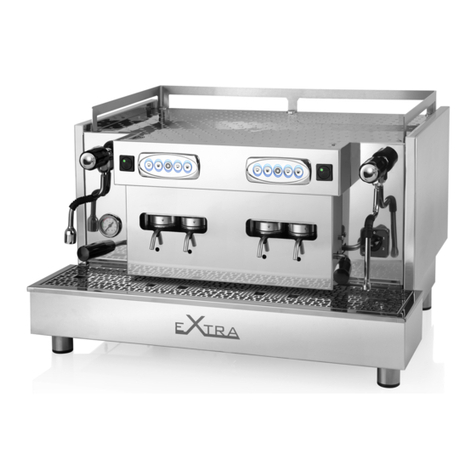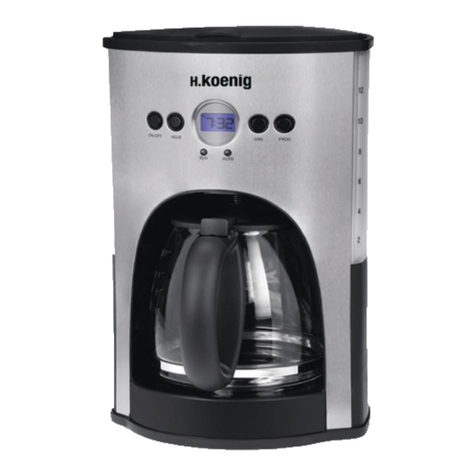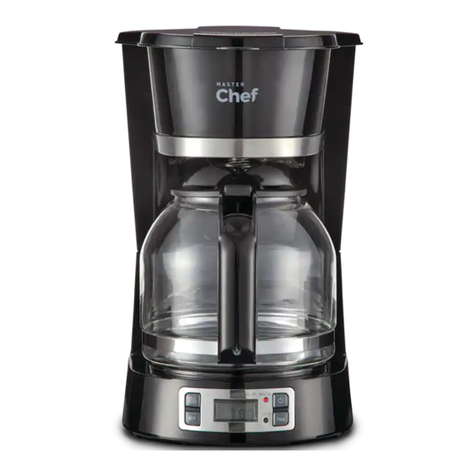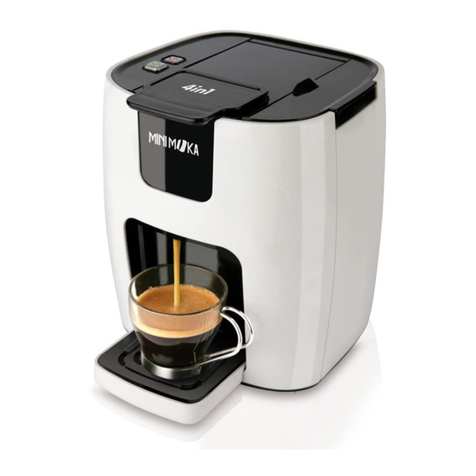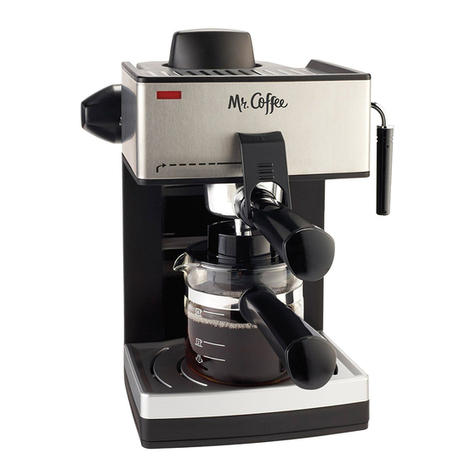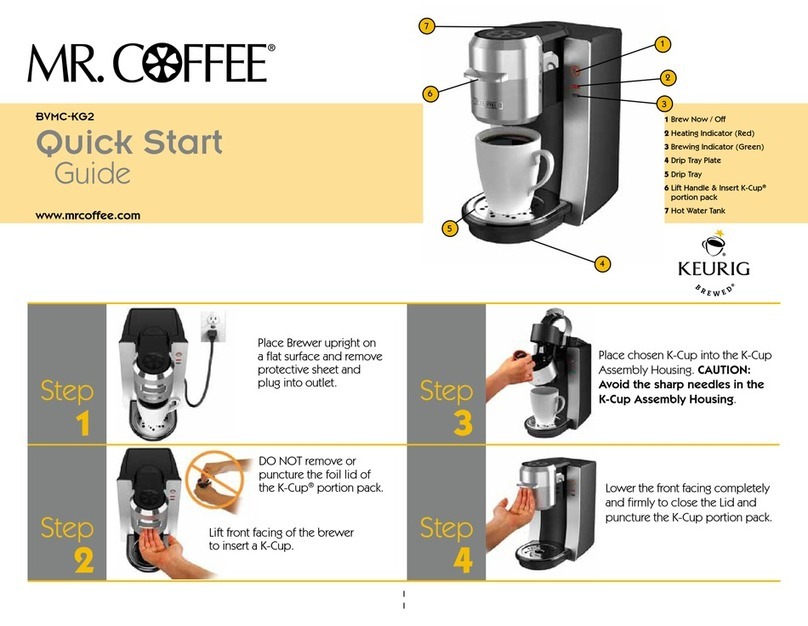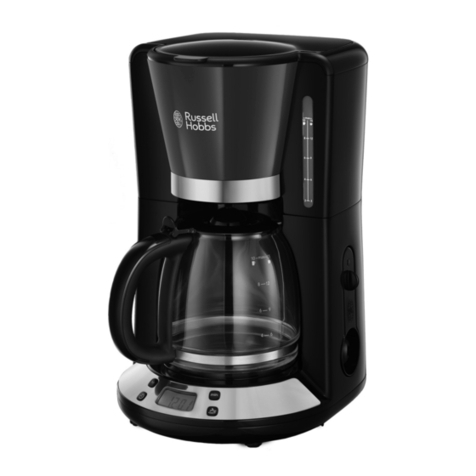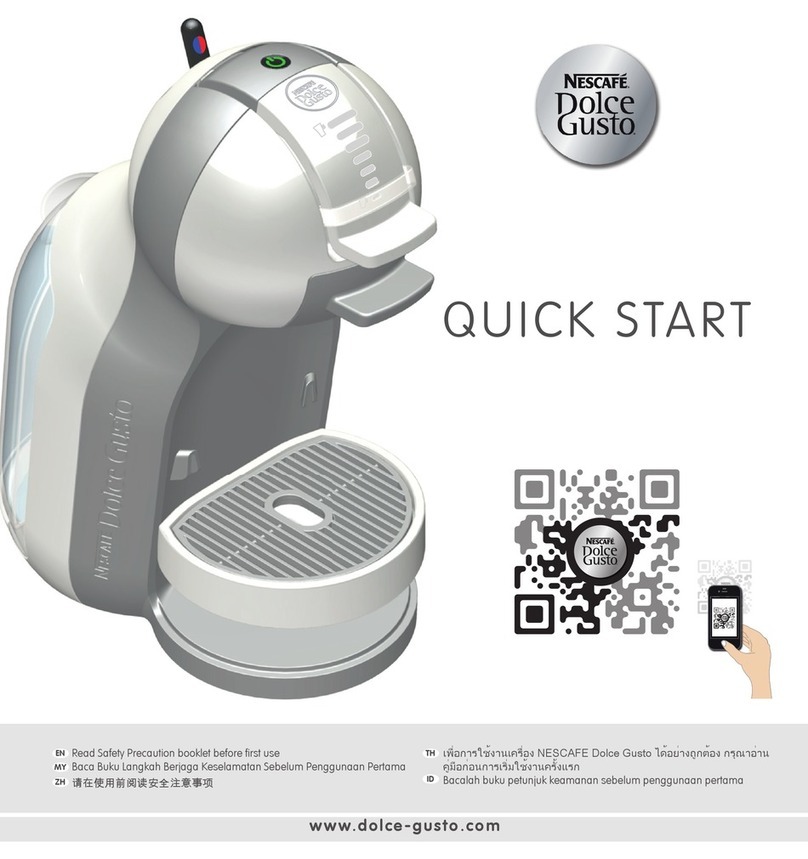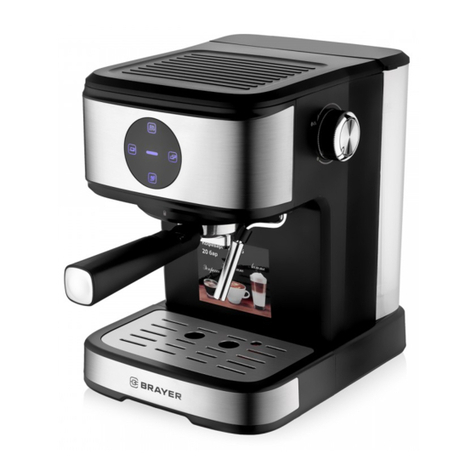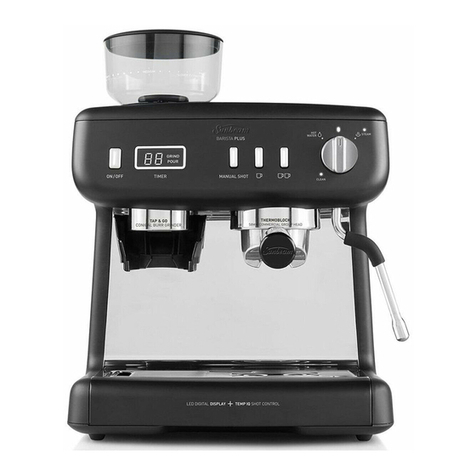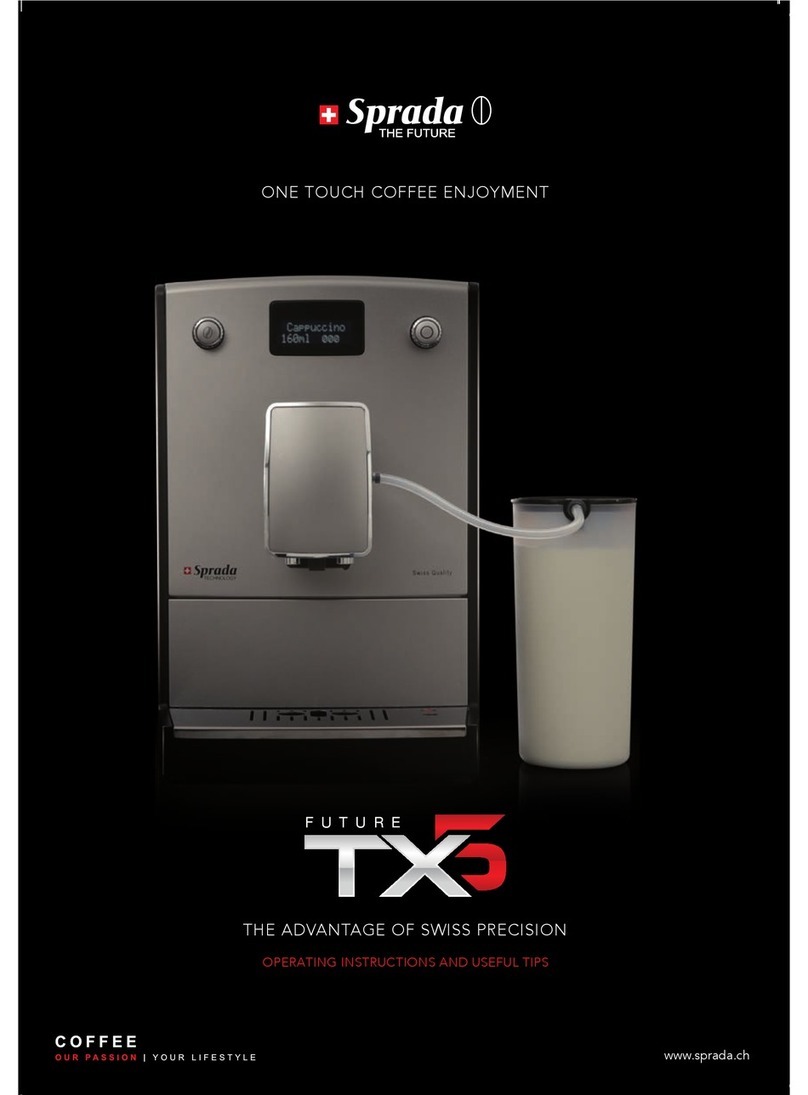FlyTek ZiP Professional User manual

1
ZiP Professional
Manuale d’uso e manutenzione
Operations and maintenance manual
Betriebs- und Wartungsanleitung
1 0 0 % M A D E I N I T A L Y
w w w . f l y t e k i t a l i a . c o m

2
P. 03
P. 03
P. 03
P. 03
P. 04
P. 04
P. 04
P. 04
P. 05
P. 06
P. 06
P. 06
P. 07
P. 07
P. 08
Tecno Meccanica S.r.l.
Tutti i diritti sono riservati
Nessuna parte di questo manuale può essere riprodotta, copiata o divulgata con qualsiasi mezzo senza
l’autorizzazione scritta della Tecno Meccanica S.r.l.
Vi ringraziamo per aver scelto la macchina da caffè ZIP PROFESSIONAL, un prodotto di alta qualità progettato,
sviluppato, fabbricato e collaudato totalmente in Italia. Questo prodotto è una macchina da caffè a cialde ad
utilizzo prevalentemente professionale.
Vi ricordiamo di utilizzare esclusivamente le cialde del Vostro Fornitore; l’uso di cialde diverse da quelle per le quali
la macchina è stata concepita possono dare uno scarso risultato della qualità del caffè.
A. Vaschetta raccogli acqua;
B. Beccucci erogazione caffè;
C. Spie di riscaldamento gruppi caffè;
D. Interruttori erogazione caffè;
E. Interruttori accensione gruppi caffè;
F. Leve pressa-cialda;
G. Coperchio serbatoio acqua;
H. Sedi inserimento cialda;
I. Manopola erogazione vapore;
J. Manopola erogazione acqua calda;
K. Accensione caldaia vapore;
L. Interruttore accensione scalda-tazze;
M. Lancia erogazione vapore;
N. Doccetta erogazione acqua calda;
O. Manometro caldaia vapore;
P. Spia esaurimento acqua serbatoio.
NB: alcuni elementi sono opzionali
INDICE
Indicazioni generali di sicurezza……………..………..…………………….
Smaltimento………………………………………..………..…………………..
Caratteristiche tecniche…………………………..………..………………….
Installazione…………………………………………..………..………………..
Riempimento serbatoio……………………………..………..………………..
Collegamento alla rete elettrica……………………..………..……………...
Beccuccio erogazione caffè…………………………..………..……………..
Accensione………………………………………………..………..……………
Come fare il caffè…………………………………………..………..………….
Apparato vapore e acqua calda (optional)……………..…………………..
Ripiano superiore scalda-tazze…………………………..…………………..
Pulizia dei gruppi caffè e della lancia vapore…………..………..…….….
Pulizia della macchina………………………………………..………..………
Anomalie e possibili soluzioni………………………………..………..…….
Condizioni di garanzia…………………………………………..……………..
A
B
F
H
H
D
D
C
E
I
K
M
L
G
G
J
E
C
D
H
F
B
N
P
O
M

3
INDICAZIONI GENERALI DI SICUREZZA
Di seguito sono riassunte alcune indicazioni generali di sicurezza:
- Leggere attentamente le istruzioni d’uso prima di procedere alla messa in funzione della macchina;
- Non effettuare mai alcuna operazione con le mani umide o bagnate;
- Non coprire mai la macchina, neppure parzialmente, con strofinacci o con teli di protezione;
- Non mettere le mani in prossimità dei beccucci erogazione caffè (rif. B), della lancia erogazione vapore (rif.
M), della doccetta erogazione acqua calda (rif. N) e del ripiano superiore scalda-tazze durante il
funzionamento;
- Non immergere la macchina in acqua per la pulizia;
- Questo apparecchio può essere utilizzato da bambini di età non inferiore a 8 anni soltanto se vengono
adeguatamente sorvegliati, se sono istruiti all’utilizzo sicuro dell’apparecchio, e se ne capiscono i rischi
connessi. Operazioni di pulizia e/o manutenzione non devono essere effettuate da parte di bambini, a
meno che essi non abbiano età superiore a 8 anni, e soltanto se sono adeguatamente sorvegliati.
Mantenere l’apparecchio ed il cavo fuori dalla portata di bambini di età inferiore a 8 anni;
- Questo apparecchio può essere utilizzato da persone con capacità fisiche, sensoriali o mentali ridotte,
oppure con mancanza di esperienza e conoscenza, soltanto se vengono adeguatamente sorvegliati ed
istruiti all’utilizzo sicuro dell’apparecchio, e se ne capiscono i rischi connessi. I bambini non devono giocare
con l’apparecchio;
- Questo apparecchio è destinato ad essere utilizzato in applicazioni professionali e similari, quali: bar,
ristoranti, agriturismo, alberghi e altre strutture di tipo ricettivo, trattorie e simili.
SMALTIMENTO
Questo prodotto è conforme al DL 151/2005 e alla Direttiva europea 2002/96/EC. Al termine della
propria vita utile, l’apparecchio NON deve essere smaltito come rifiuto generico domestico. Deve
invece essere portato in uno dei centri di raccolta differenziata per rifiuti elettrici ed elettronici
approntati dalla Pubblica Amministrazione. Un’appropriata raccolta differenziata contribuisce ad
evitare possibili effetti negativi sulla salute e sull’ambiente!
CARATTERISTICHE TECNICHE
Nella parte inferiore della macchina è apposta la targa identificativa con riportati i dati tecnici da comunicare al
Rivenditore in caso di richiesta di informazioni o di assistenza tecnica.
ALIMENTAZIONE: 220-230 V
FREQUENZA: 50/60 HZ
POTENZA MAX: 3.000 W
PRESS. GRUPPI CAFFE’: 20 bar
PESO: 20 KG ca.
DIMENS. LxHxP: 575x355x360 mm
CAPACITA’ SERBATOIO: 5,0 litri
CAPACITA’ VASCHETTA: 700 cm3
MATERIALE PRINCIPALE: acciaio
INSTALLAZIONE
Estrarre la macchina dall’imballo e collocarla su un piano stabile, adatto a sostenerne il peso, in prossimità di una
presa di corrente idonea. Conservare l’imballo in tutte le sue parti per eventuali futuri trasporti.
Il danneggiamento, la rimozione o l’alterazione della targa identificativa deve essere
immediatamente segnalata al Rivenditore. Non saranno possibili interventi in garanzia se
la targa identificativa risulta danneggiata, rimossa o alterata.

4
RIEMPIMENTO DEL SERBATOIO
Togliere il coperchio di acciaio (rif. G) per accedere al serbatoio acqua. RACCOMANDIAMO L’UTILIZZO DI UN
FILTRO ADDOLCITORE O DI UN SACCHETTO ANTICALCARE che deve essere periodicamente sostituito. Se
ciò non viene fatto, all’interno della macchina si possono formare incrostazioni calcaree tali da pregiudicarne il
buon funzionamento, oltre che la validità della garanzia. Dopo aver quindi introdotto il filtro addolcitore all’interno
del serbatoio, riempire quest’ultimo con acqua potabile, possibilmente a basso contenuto di calcio. Si può eseguire
il riempimento del serbatoio utilizzando un imbuto e una bottiglia. Per tutte queste operazioni rimuovere
esclusivamente il tappo rotondo a destra (quello con i tubi di carico) del serbatoio. Il tappo rotondo a
sinistra (quello con un solo tubo inserito) non va toccato.
La macchina è dotata di un sensore di livello acqua nel serbatoio. Se l’acqua all’interno del serbatoio raggiunge un
livello troppo basso, le eventuali erogazioni in corso vengono interrotte e la spia di esaurimento acqua (rif. P) inizia
a lampeggiare, segno che è necessario procedere al riempimento del serbatoio come spiegato sopra. Per evitare
di arrivare a questo punto, è consigliabile verificare visivamente il livello dell’acqua guardando attraverso l’asola
posta sul lato destro della macchina.
COLLEGAMENTO ALLA RETE ELETTRICA
BECCUCCI EROGAZIONE CAFFE’ (RIF. B)
I beccucci erogazione caffè sono situati nella parte anteriore della macchina.
ACCENSIONE
Accendere la macchina premendo l’interruttore generale luminoso verde posto sul fianco sinistro della stessa; la
spia incorporata si accenderà. A questo punto è possibile decidere quali singoli componenti accendere: gruppo
caffè sinistro e/o gruppo caffè destro mediante i relativi interruttori (rif. E); caldaia erogazione vapore e acqua calda
mediante l’apposito interruttore (rif. K); ripiano scalda-tazze mediante l’apposito interruttore (rif. L). I suddetti
componenti possono essere accesi o spenti in modo completamente indipendente l’uno dall’altro.
La tensione di alimentazione della macchina non è modificabile dall’utente. Prima del
collegamento alla rete elettrica, verificare che la tensione della rete corrisponda alla
tensione di alimentazione della macchina indicata nella targhetta di identificazione.
Durante l’erogazione non toccare i beccucci e non esporsi con il viso alle parti calde
dell’apparecchio (pericolo di ustioni). Le superfici riscaldanti della macchina sono
soggette a calore residuo anche dopo l’uso!

5
COME FARE IL CAFFE’
Premere uno o entrambi gli interruttori di accensione gruppo caffè (rif. E); appena accesi, inizia il rapido processo
di riscaldamento dei relativi gruppi. Attendere l’accensione delle relative spie di riscaldamento (rif. C): quando ciò si
verifica vuol dire che i gruppi caffè sono in temperatura ottimale di esercizio e che sono quindi pronti all’uso.
Azionare una o entrambe le leve pressa-cialda (rif. F) sollevandole verso l’alto come indicato dalla freccia 1.
Inserire una cialda in una delle apposite sedi (rif. H) e abbassare delicatamente la leva fino a scatto fine corsa,
come indicato in figura dalla freccia 2. Porre un bicchierino sotto al relativo beccuccio e premere il corrispondente
interruttore di erogazione (rif. D); dopo circa 5 secondi inizierà l’erogazione del caffè. Raggiunto il livello desiderato
nel bicchierino premere nuovamente il medesimo interruttore di erogazione per fermare l’uscita del caffè. Se
durante l’erogazione la corrispondente spia di riscaldamento (rif. C) si spegne, significa soltanto che il gruppo in
uso si sta riscaldando per portare l’acqua in temperatura ottimale; l’erogazione può quindi tranquillamente
continuare. E’ consigliabile invece attendere l’accensione della suddetta spia (rif. C) prima di erogare il caffè
successivo. Una volta che il caffè è stato erogato si consiglia di rimuovere la cialda per evitare che, asciugandosi,
rimanga attaccata.
E’ importante svuotare la vaschetta raccogli acqua (rif. A) dopo l’erogazione di non più di 50 caffè.
Utilizzare esclusivamente le cialde del Vostro Fornitore. L’uso di cialde diverse da quelle
per le quali la macchina è stata concepita può danneggiare l’apparecchio.
Se la vaschetta non viene svuotata, l’acqua può fuoriuscire.
1.
2.
F

6
APPARATO VAPORE E ACQUA CALDA (OPTIONAL)
Se la Vostra ZiP Professional è dotata dell’apparato per la produzione di vapore e acqua calda, Vi preghiamo di
leggere attentamente quanto segue. Per poter utilizzare tale apparato è necessario premere, sul pannello frontale
dei comandi, l’interruttore d’accensione (rif. K) della caldaia specifica; ciò consentirà il riscaldamento dell’apposita
caldaia dedicata alla produzione del vapore e dell’acqua calda. Attendere circa 5 minuti, durante i quali la caldaia
andrà in pressione ideale di esercizio. Verificare da manometro (rif. O) che la pressione arrivi a circa 1,5 bar:
quando ciò si verifica vuol dire che la caldaia è pronta ad erogare vapore e/o acqua calda.
Per erogare vapore: inserire la lancia vapore (rif. M) all’interno di una tazza o altro recipiente contenente il liquido
da scaldare o emulsionare (es. latte) e girare la manopola di erogazione vapore (rif. I) in senso antiorario fino a
raggiungere la corretta intensità di vapore. Una volta ottenuto il risultato desiderato, girare la stessa manopola (rif.
I) in senso orario fino ad arrestare completamente l’uscita del vapore.
Per erogare acqua calda: posizionare una tazza –o altro recipiente adatto- sotto la doccetta dell’acqua calda (rif.
N) e girare la manopola erogazione acqua calda (rif. J) in senso antiorario fino a raggiungere la corretta intensità
del flusso. Una volta ottenuto il risultato desiderato, girare la stessa manopola (rif. J) in senso orario fino ad
arrestare completamente l’uscita dell’acqua calda.
RIPIANO SUPERIORE SCALDA-TAZZE
ZiP Professional è dotata di un comodo e pratico ripiano scalda-tazze a resistenza, situato sulla parte superiore
della macchina, che raggiunge la temperatura ideale dopo circa 2 minuti dalla sua accensione mediante l’apposito
interruttore (rif. L).
PULIZIA DEI GRUPPI CAFFE’ E DELLA LANCIA VAPORE (OVE PRESENTE)
I gruppi caffè devono essere puliti settimanalmente. Per fare ciò bisogna procedere ad effettuare una erogazione
senza cialda. Porre bicchieri abbastanza capienti sotto entrambi i beccucci e premere i relativi interruttori di
erogazione caffè (rif. D); dopo circa 5 secondi inizierà l’erogazione di acqua calda. Dopo circa due minuti premere
nuovamente gli interruttori di erogazione per fermare l’uscita dell’acqua.
La lancia vapore (optional) va pulita giornalmente, se utilizzata. A tale riguardo, inserire la lancia vapore (rif. M)
all’interno di una tazza o altro recipiente contenente esclusivamente acqua pulita e girare la manopola di
erogazione vapore (rif. I) in senso antiorario fino a raggiungere la massima intensità di vapore. Dopo un minuto
girare nuovamente la stessa manopola in senso orario fino ad arrestare completamente l’uscita del vapore.
Attendere che la lancia vapore si sia sufficientemente raffreddata, dopodichè procedere alla sua pulizia esterna
tramite un panno morbido inumidito di acqua calda. Eliminare tutte le incrostazioni (ad esempio di latte) per evitare
che vengano ostruiti i fori di uscita del vapore.
Durante l’erogazione non toccare la lancia vapore e/o la doccetta dell’acqua calda, e non
esporsi con il viso alle parti calde dell’apparecchio (pericolo di ustioni). Le superfici
riscaldanti della macchina sono soggette a calore residuo anche dopo l’uso!
Non toccare il ripiano superiore scalda-tazze, e non esporsi con il viso alle parti calde
dell’apparecchio (pericolo di ustioni). Le superfici riscaldanti della macchina sono
soggette a calore residuo anche dopo l’uso!

7
PULIZIA DELLA MACCHINA
Qualsiasi tipo di pulizia, eccezion fatta quella dei gruppi caffè e della lancia vapore, deve essere eseguita a
macchina spenta (interruttore generale di alimentazione su zero) e dopo che la macchina si è raffreddata. Per
pulire la superficie esterna della macchina usare solamente un panno morbido inumidito con acqua. La vaschetta
raccogli acqua (rif. A) va estratta e lavata con acqua calda e sapone utilizzando una spugna non abrasiva e deve
essere accuratamente asciugata prima del suo reinserimento. Se si rendesse necessaria la pulizia del serbatoio,
utilizzare acqua calda.
ANOMALIE E POSSIBILI SOLUZIONI
Le riparazioni devono essere eseguite esclusivamente da personale autorizzato e competente. Se non si è in
grado di risolvere i problemi con l’aiuto della presente tabella, rivolgersi al proprio Rivenditore Autorizzato.
PROBLEMA
POSSIBILE CAUSA
SOLUZIONE
Erogazione del caffè insufficiente
o impossibile
Serbatoio dell’acqua vuoto
Riempire il serbatoio (pag. 4).
Spostamento sonda livello
acqua
Verificare che la sonda, inserita nel
foro sinistro del serbatoio, non
tocchi le pareti interne del serbatoio
o altri oggetti.
Macinatura troppo fine
Utilizzare una cialda nuova.
Rivolgersi al Fornitore delle cialde.
I caffè erogati sono freddi anche
se le spie (rif. C) sono accese
Tazze ceramiche fredde
Preriscaldare le tazze con acqua
calda, oppure riponendole sul
ripiano superiore scalda-tazze. In
alternativa, utilizzare bicchierini
monouso.
Erogazione troppo lenta
L’acqua nel serbatoio sta per finire,
riempire il serbatoio (pag. 4).
Sistema di riscaldamento
difettoso
Rivolgersi al Rivenditore.
Le pompe fanno troppo rumore e
non permettono l’uscita del caffè
Le pompe hanno aspirato aria
Riempire il serbatoio (pag. 4) e
premere a ripetizione gli interruttori
di erogazione caffè (rif. D) fino a
sentire il corretto innesco delle
pompe.
La “crema” è troppo poca o
manca del tutto
Macinatura troppo grossa
Utilizzare una cialda nuova.
Rivolgersi al Fornitore delle cialde.
Caffè non fresco
Utilizzare una cialda nuova.
Rivolgersi al Fornitore delle cialde.
Acqua nel serbatoio presente
da molti giorni
Sostituire l’acqua del serbatoio
facendo attenzione al corretto re-
inserimento della sonda.
Non utilizzare la lavastoviglie per pulire la macchina o suoi componenti. Si danneggiano
irrimediabilmente! Non usare altresì solventi e prodotti o materiali abrasivi.
Se si utilizzano detergenti per la pulizia del serbatoio, assicurarsi di risciacquarlo
scrupolosamente, poiché eventuali residui chimici all’interno del serbatoio possono
provocare pericolo di intossicazione alimentare.
Eventuali riparazioni eseguite non rispettando i capitolati di produzione della Casa costruttrice
e/o utilizzando pezzi di ricambio non originali, possono essere fonte di pericolo per l’utente.
Se l’acqua nel serbatoio viene a mancare si possono bruciare le pompe e, di conseguenza, la
macchina può andare in cortocircuito.

8
DICHIARAZIONE DI CONFORMITA’
La Società costruttrice Tecno Meccanica S.r.l. con sede amministrativa sita in Via Marlianese
43, 51034 Serravalle Pistoiese (PT) ITALY
Dichiara sotto la propria responsabilità che la macchina per il caffè espresso descritta in questo
manuale:
Modello: ZiP Professional Alimentazione: 220v 50/60hz Anno di costruzione: vedi targa CE
È conforme alle Direttive:
2006/42/CE relativa al ravvicinamento delle legislazioni degli Stati membri relative alle
macchine, che sostituisce la Direttiva 98/37/CE;
2014/35/UE relativa al materiale elettrico destinato ad essere adoperato entro taluni limiti
di tensione;
2014/30/UE relativa alla compatibilità elettromagnetica (EMC), che sostituisce la Direttiva
2004/108/CEE.
L’Amministratore
GARANZIA
L’apparecchio è garantito per 1 anno dalla data di acquisto, salvo i termini di legge.
La garanzia è limitata a difetti di fabbricazione o di materiali, non è estesa ai pezzi soggetti ad
usura o a danneggiamenti alle parti delicate (interruttori, cavo di alimentazione, ecc.…), e NON
è altresì estesa a danni conseguenti incuria od uso errato dell’apparecchio medesimo (ad
esempio utilizzo di acqua con durezza superiore a 12°F e/o mancato utilizzo o sostituzione di
idoneo sacchetto addolcitore, che possono causare incrostazioni di calcare). In caso di guasto
coperto da garanzia, riportare l’apparecchio presso il Rivenditore dove lo stesso è stato
acquistato, muniti di scontrino o fattura sulla quale deve essere riportato il numero di matricola,
che deve corrispondere a quello posto nella parte inferiore dell’apparecchio. Solo in questo
modo è garantito il ripristino gratuito delle funzionalità dell’apparecchio, mentre le spese di
trasporto rimangono ad esclusivo carico del Cliente. La garanzia decade in caso di impiego
improprio o manomissione, uso della forza e interventi non eseguiti da nostro personale
specializzato. La nostra garanzia non limita comunque i diritti legali del Cliente.
ETICHETTA COLLAUDO –NUMERO DI MATRICOLA:

9
P. 10
P. 10
P. 10
P. 10
P. 11
P. 11
P. 11
P. 11
P. 12
P. 13
P. 13
P. 13
P. 14
P. 14
P. 15
Tecno Meccanica S.r.l.
All rights reserved
Any part contained in this manual cannot be reproduced, copied or communicated without prior written authority of
the Tecno Meccanica S.r.l.
Thank you for choosing the coffee machine ZIP PROFESSIONAL, a high-quality product that has been designed,
developed, made and tested totally in Italy. This product is a pod-working coffee machine, thought to be used
mostly professionally. We recommend you to use only pods from Your Supplier; the use of pods designed for
other machines could give as a result a low quality coffee.
A. Drip tray;
B. Dispensing spouts;
C. Coffee serving units heating lights;
D. Coffee service buttons;
E. Coffee serving units switch;
F. Pod-pushing lever;
G. Water tank lid;
H. Door for inserting pods;
I. Steam drawing knob;
J. Hot water drawing knob;
K. Steam boiler switch;
L. Cup warming switch;
M. Steam spout;
N. Hot water spout;
O. Pressure gauge;
P. Tank water-depletionlight.
NB. Some parts are optional
SUMMARY
General safety rules…………………..………………………………………...
Disposal………………………………………………..………………………….
Technical specifications………………………………..……………………...
Installing…………………………………………………..…………..………....
Filling the water tank…………………………………..………………..……..
Electrical connection…………………………..……………………………….
Dispensing spout………………………………..…………………………......
Starting……………………………………………………..…………………….
How to make coffee………………………………………………..…………...
Steam and Hot water dispenser (optional)……………………………..…..
Cup-warming shelf………………………………………………………….…..
Coffee serving units and Steam spout cleaning…..……………..……….
Machine cleaning………………………………………………………..………
Troubleshooting…………………………………………………………..…….
Warranty…………………………………………………………………………..
A
B
F
H
H
D
D
C
E
I
K
M
L
G
G
J
E
C
D
H
F
B
N
P
O
M

10
GENERAL SAFETY RULES
Here are summarized some general safety rules:
-Strictly read the operating instructions before connecting the machine;
-Never use the machine with wet hands;
-Do not cover the machine with towels or tissues, not even partially;
-Do not put in contact your hands with the dispensing spouts (ref.B), the steam tube (ref.M), the hot water
dispenser (ref.N) and the cup warming shelf during the machine operation;
-Do not immerse the machine into water for cleaning;
-This appliance can be used by children aged from 8 years and above if they have been given supervision
or instruction concerning use of the appliance in a safe way and if they understand the hazards involved.
Cleaning and user maintenance shall not be made by children unless they are older than 8 and supervised.
Keep the appliance and its cord out of reach of children aged less than 8 years;
-Appliances can be used by persons with reduced physical, sensory or mental capabilities or lack of
experience and knowledge if they have been given supervision or instruction concerning use of the
appliance in a safe way and understand the hazards involved. Children shall not play with the appliance;
-This appliance is designed to be used in professional application, such as bars, restaurants, hotels and
other accommodation facilities.
DISPOSAL
This product complies with the LD 151/2005 and the European directive 2002/96/EC. At its end-of-
life, the product MUST NOT be treated as household waste. Instead, it shall be taken to the
applicable collection point for the recycling of electrical and electronic equipment. By ensuring this
product is disposed of correctly, you will help prevent potential negative consequences for the
environment and human health!
TECHNICAL SPECIFICATIONS
The data plate with all technical data is placed on the upper side, in order to be communicated to the Supplier in
case of information and technical support.
POWER INPUT: 220-230 V
FREQUENCY: 50/60 HZ
MAXIMUM POWER: 3.000 W
SERVING UNITS PRESS.: 20 bar
WEIGHT: 20 KG
DIMENS. LxHxP: 575x355x360 mm
TANK CAPACITY: 5,0 lt
DRIP TRAY CAPACITY: 700 cm3
MAIN MATERIAL: steel
INSTALLING
Remove the machine from the packaging and lay it on a stable surface, apt to lift its weight, near a proper power
main. Save the packaging and all its parts if you will need to move the appliance in the future.
The data plate damage, removal or change shall be immediately communicated to the
Supplier. Interventions under warranty will not be possible if the data plate will be
damaged, removed or changed.

11
FILLING THE WATER TANK
Remove the steel lid (ref.G) to refill the water tank. WE RECOMMEND TO USE A WATER-SOFTENER OR A
LIMESCALE SACK that must be periodically replaced. If you do not do so, limescale deposits inside the machine
may alter its correct functioning, as well as the warranty's validity. After the introduction of the softener inside the
water tank, fill the tank with drinkable water, possibly with a low quantity of calcium. You can fill the water tank
through the use of a funnel or a bottle. For all these operations remove only the round lid on the right (the one
with drain pipes) of the tank. The round lid on the left (the one with only one pipe) must not be touched.
The machine is equipped with a sensor that detects the water level in the tank. If the water reaches a too low level,
the ongoing brewing will be suspended and the water-depletion light (ref.P) will start flashing, meaning that you
need to refill the tank as explained above. To avoid this process, we recommend to verify the water level by
watching through the eyelet placed on the right side of the machine.
ELECTRICAL CONNECTION
DISPENSING SPOUTS (RIF. B)
The dispensing spouts are placed on the upper side of the machines.
STARTING
Switch on the machine pressing the main green-lighting switch placed on the left side of the machine; its indicator
light will be lighting. It is now possible to decide which single parts you prefer to switch on: left coffee serving units
and/or right coffee serving units through their own switches (ref.E); steam and hot water dispenser boiler through
its own switch (ref.K); cup warming shelf through its own switch (ref.L). All these components can be switched on
or switched off separately.
The power source's potential difference cannot be modified by the user. Before the
connection to the electricity grid, please verify that the potential difference of the grid
corresponds with the one of the machine, as indicated on the data plate.
During the brewing, do not touch the spouts and do not expose the face to hot parts of the
appliance (risk of burns). The warming surfaces of the machine remain hot after the
usage!

12
HOW TO MAKE COFFEE
Push one or both the switches of the coffee serving units (ref.E); as soon as they are switched on, the rapid
process of warming will start. Wait for the starting of the heating lights (ref.C): as this will occur, the serving units
will be at their optimal functioning temperature and they are ready for the use. Activate one or both the pod-
pressing levers (ref.F), lifting up the lever as shown by the arrow n.1.
Insert a pod into one of the specific places (ref.H) and delicately lift down the lever until the stroke-end-click, as
shown by the arrow n.2. Now put a small cup under the spout and press the corresponding brewing switch (ref.D);
after about 5 seconds the coffee brewing will start. When the coffee will reach the desired level, press the same
switch again to stop the brewing. If during the coffee brewing the heating lights switch off (ref.C), it only means that
the serving unit in use is heating up to bring the water at the optimal temperature; the brewing can therefore easily
continue. It is recommended to wait for the lighting of the light above mentioned (ref.C) before brewing the following
coffee. Once the coffee has been brewed, it is recommended to remove the pod to avoid that it may stuck once
dried off.
It is important to empty the drip tray (ref.A) after brewing no more than 50 coffees.
Use only the pods of Your Supplier. The use of any other pod can damage the appliance.
If the drip tray is not emptied the water may pour out.
1.
2.
F

13
STEAM AND HOT WATER DISPENSER (OPTIONAL)
Please read carefully this paragraph, in case Your ZiP Professional is equipped with a steam and hot water
dispenser set. In order to use this set, you need to press the power switch (ref.K) of the boiler, placed on the front
control panel; it will permit the heating of the boiler designed for the drawing of steam and hot water. Wait about 5
minutes, while the pressure of the boiler will be enough for its functioning. Check on the pressure gauge (ref.O) if
the pressure is about 1,5 bar: if it is, the boiler is ready to draw steam and hot water.
To draw steam: insert the steam tube (ref.M) inside a cup or other vessel containing the liquid you want to warm
(eg. Milk) and turn the steam dispenser knob (ref.I) counterclockwise until you reach the right steam intensity. Once
you reach the desired result, turn the same knob (ref.I) clockwise until you stop the steam drawing.
To draw hot water: put a cup or other vessel under the hot water spout (ref.N) and turn the hot water drawing
knob (ref.J) until you reach the right flux intensity. Once you reach the desired result, turn the same knob (ref.J)
clockwise until you stop the hot water drawing.
CUP-WARMING SHELF
ZiP Professional is equipped with a useful and handy cup-warming shelf, placed on the upper part of the machine,
which reaches the ideal temperature about 2 minutes after the starting of the machine through the specific switch.
COFFEE SERVING UNITS AND STEAM SPOUT CLEANING (WHERE PRESENT)
The serving units must be weekly cleaned. In order to do so, it is necessary to make a brewing without the pod.
Place an ample cup under both spouts and press the coffee brewing switches (ref.D); after about 5 seconds, the
drawing of hot water will start. After about two minutes press the switches again to stop the water drawing.
The steam spout (optional) must be cleaned every day, if used. To do so, insert the steam spout (ref.M) into a cup
or any other vessel containing exclusively clean water and turn the steam drawing knob (ref.I) counterclockwise
until You reach the highest steam intensity. After one minute, turn again the same knob clockwise until you stop
completely the drawing of the steam. Wait until the steam spout is cooled enough and then proceed cleaning it
externally with a smooth dampen rag. Remove all the encrustations (eg. Milk) to avoid that the holes are
obstructed.
During the drawing do not touch the steam spout and/or the hot water spout, and do not
expose the face to the hot parts of the appliance (risk of burns). The warming surfaces of
the machine remain hot after the usage!
Do not touch the cup-warming shelf and do not expose the face to the hot parts of the
appliance (risk of burns). The warming surfaces of the machine remain hot after the
usage!

14
MACHINE CLEANING
Before starting any cleaning operation, except the coffee serving units and the steam spout cleaning, the machine
must be switched off (main switch on zero level) and it must be cooled. To clean the external surface of the
machine, only use a smooth dampen rag. The drip tray (ref.A) shall be removed and washed with warm water and
soap, using a non-abrasive sponge, and it shall be thoroughly dried before being plugged. If it is necessary to clean
the tank, only use warm water.
TROUBLESHOOTING
Every repair and maintenance shall be done exclusively by authorized and competent personnel. Please contact
the Supplier for any problems not covered in the above table or when the suggested solutions do not solve the
problem.
PROBLEM
POSSIBLE CAUSE
SOLUTION
Coffee is brewed in drops or not
dispensed
Empty water tank
Fill the tank (pag.11).
The water-level probe changed
position
Verify that the probe, placed in the
left-hole of the tank, is not touching
the inner parts of the tank or other
objects.
Too fine grinding
Use a new pod. Contact the pods
Supplier.
Coffee is brewed cold even if the
lights (ref.C) are switched on
Cold ceramic cups
Pre-warm the cups with warm water
or lay them on the cup-warmer
shelf. In alternative, use disposable
cups.
Slow brewing
Water in the tank is going to finish,
fill the tank (pag.11).
Heating system in pan
Contact the Supplier.
Pumps are too noisy and they do
not allow the coffee brewing
Pumps sucked air
Fill the tank (pag.11) and
repeatedly press the coffe brewing
switches (ref.D) until You hear the
correct ticking of the pumps.
The “creme” is not enough or
there is no “creme”
Too large grinding
Use a new pod. Contact the pods
Supplier.
Not fresh coffee
Use a new pod. Contact the pods
Supplier.
Water in the tank is there from
long time
Replace the water in the tank being
careful of the correct place of the
probe.
Do not use the dishwasher to clean the machine or its components. They will be
irreparably damaged! Do not even use solvents and abrasive products or materials.
If using detergents during the tank cleaning, please rinse it carefully, because chemical
residuals inside the tank can cause food poisoning.
Possible repairs carried out without respecting the Producer's specifications of production
and/or using non-original repair parts might be a source of danger for the user. If the water in
the tank is missing the pumps can burn out and, consequently, the machine can short-circuit.

15
DECLARATION OF CONFORMITY
The Manufacturer Tecno Meccanica S.r.l., Via Marlianese 43, 51034 Serravalle Pistoiese (PT)
ITALY
Declares under its own responsibility that the espresso coffee machine described in this
manual:
Model: ZiP Professional Power input 220v 50/60hz Year of manufacturing: see the CE plate
Is compliant with Directives:
2006/42/CE on the approximation of the laws of the Member States relating to
machinery, replaces the CEE Directive 98/37/CE;
2014/35/UE on Electric material to be used within such voltage limits;
2014/30/UE on Electromagnetic Compatibility (EMC), that replaces the CEE Directive
2004/108/CEE.
The CEO
WARRANTY
The warranty period lasts 1 year from the date of purchase.
The warranty covers defects in manufacturing or materials, and does not apply to all parts
subject to wear and tear or to delicate parts (switches, power cable etc…), and IT DOES NOT
apply to damages resulting from negligence or incorrect use of the appliance (eg. using water
with a degree of hardness higher than 12°F and/or missed using or replacement of water
softener, that can cause limescale encrustations). In case of malfunction covered by the
warranty, take the appliance to the Supplier where it has been bought, with the sales receipt or
the invoice, on which the identification number has to be reported, which must correspond to the
number reported on the lower part of the appliance. Only this way all free maintenances and
repairs are granted, while the transportation fees are under the Client's charge. This warranty
expires in case of inappropriate usage or alteration, usage of the force and any intervention not
executed by our personnel. Our warranty does not limit the legal right of the Client.
TEST LABEL –IDENTIFICATION NUMBER:

16
S. 17
S. 17
S. 17
S. 17
S. 18
S. 18
S. 18
S. 18
S. 19
S. 20
S. 20
S. 20
S. 21
S. 21
S. 22
Tecno Meccanica S.r.l.
Alle Rechte vorbehalten
Kein Teil dieses Handbuchs darf in keiner Weise ohne die schriftliche Genehmigung von Tecno Meccanica S.r.l.
reproduziert, vervielfältigt oder übertragen werden.
Wir danken Ihnen für die Wahl der Kaffeemaschine ZIP PROFESSIONAL, eines qualitativ hochwertigen Produkt,
das vollständig in Italien entworfen, entwickelt, hergestellt und getestet wurde. Dieses Produkt ist eine
Kaffeemaschine mit Kaffeepads, der hauptsächlich für den professionellen Einsatz konzipiert wurde. Wir
empfehlen Ihnen, ausschliesslich die Pads Ihres Lieferanten zu verwenden; die Verwendung anderer Pads, für die
die Maschine nicht konzipiert wurde, kann die Qualität des Kaffees beschädigen.
A. Wasserauffangschale;
B. Kaffeeauslauf;
C. Temperatur-Kontrolllampe;
D. Taste für die Kaffeeausgabe;
E. Ein-/Ausschalter für Kaffeegruppen;
F. Brühgruppenbedienhebel;
G. Wassertankabdeckung;
H. Brühgruppe;
I. Drehgriff Dampf;
J. Drehgriff Heißwasserrohr;
K. Ein/Ausschalter Dampfrohr;
L. Ein/Ausschalter Tassenwärmer;
M. Dampfrohr;
N. Heißwasserrohr;
O. Kesseldruckmanometer;
P. Kontrolllampe Wassertank.
NB. einige Bestandteile sind optional
INHALT
Allgemeine Sicherheitshinweise………….……………………………………...
Entsorgung………………………………………………..………..……………….
Technische Spezifikationen………………………………..……..……………...
Inbetriebnahme…………………………………………………..…..…..………....
Befüllen des Tanks…………………………………..……………………...……..
Anschluss an das Stromnetz……………..……………………………………...
Kaffeeauslauf………………………………..…………………………..................
Einschalten……………………………………………………..…………………....
Zubereitung des Kaffees……………………..…………………………………...
Dampf- und Heißwasser-System (optional)……………………………..……..
Ablage mit Tassenwärmer………………………………………………….…….
Reinigung der Kaffeegruppen und des Dampfrohres…..……………..…….
Reinigung der Maschine………………………………………………..……….…
Probleme und mögliche Lösungen………………………………..…………….
Garantiebedingungen………………………………………………….…………..
A
B
F
H
H
D
D
C
E
I
K
M
L
G
G
J
E
C
D
H
F
B
N
P
O
M

17
ALLGEMEINE SICHERHEITSHINWEISE
Der folgende Teil fasst einige allgemeine Sicherheitsrichtlinien:
-Lesen Sie sorgfältig die Betriebsanleitungen vor Inbetriebnahme des Produktes;
-Berühren Sie das Gerät niemals mit feuchten oder nassen Händen;
-Decken Sie niemals die Maschine, auch nur partiell, mit Handtüchern oder mit Abdeckfolien;
-Legen Sie Ihre Hände nicht in der Nähe des Kaffeeauslasses (B), des Dampfrohres (M), des
Heißwasserrohres (N) und des Tassenwärmers während des Betriebs;
-Tauchen Sie nicht das Gerät in Wasser für die Reinigung;
-Dieses Gerät kann von Kindern ab 8 Jahren benutzt werden, nur wenn sie beaufsichtigt oder
bezüglich des sicheren Gebrauchs des Gerätes unterwiesen wurden und die daraus resultierenden
Gefahren verstehen. Reinigung und Pflege dürfen nicht von Kindern durchgeführt werden, es sei
denn, diese sind mehr als 8 Jahren alt und werden dabei beaufsichtigt. Halten Sie das Gerät und die
Kabel außerhalb der Reichweite von Kindern unter 8 Jahren;
-Dieses Gerät darf von Personen mit eingeschränkten physischen, sensorischen oder geistigen
Fähigkeiten oder Mangel an Erfahrung oder Wissen nur dann benutzt werden, wenn sie eine
angemessene Aufsicht gewährleistet ist oder wenn sie eine Einweisung in die Verwendung des Produkts
erhalten und die damit verbundenen Gefahren verstanden haben. Kinder dürfen nicht mit dem Gerät
spielen;
-Dieses Gerät ist für den Einsatz in professionellen und ähnliche Anwendungen konzipiert, wie z.B.: Bars,
Restaurants, Agriturismi, Hotels und andere Beherbergungsbetriebe, Gaststätten usw.
ENTSORGUNG
Dieses Produkt entspricht dem LD 151/2005 und der EU-Richtlinie 2002/96/EG. Am Ende seiner
Lebensdauer darf das Gerät nicht als normaler Hausmüll entsorgt werden. Stattdessen muss es in
eine öffentliche Sammelstelle für Elektro- und Elektronikschrott gebracht werden. Eine korrekte
Mülltrennung hilft dabei, mögliche negative Auswirkungen auf die Gesundheit und die Umwelt zu
vermeiden!
TECHNISCHE SPEZIFIKATIONEN
An der Unterseite der Maschine befindet sich der Typenschild mit den technischen Daten, die dem Händler bei
technischem Unterstützungsbedarf oder bei Informationsanfrage mitgeteilt werden müssen.
STROMVERSORGUNG: 220-230 V
FREQUENZ: 50/60 HZ
MAXIMALE LEISTUNG: 3.000 W
DRUCK KAFFEEGRUPPEN: 20 bar
GEWICHT: 20 KG ca.
GRÖßE LxHxP: 575x355x360 mm
TANKINHALT: 5,0 Liter
KAPAZITÄT DER SCHALE: 700cm3
HAUPTMATERIAL: Stahl
INTRIEBNAHME
Nehmen Sie das Gerät aus der Verpackung heraus und legen Sie es auf eine stabile Oberfläche, die in der Lage
ist, sein Gewicht zu tragen, und die in der Nähe einer geeigneten Steckdose ist. Bitte halten Sie die Verpackung in
allen seinen Teilen für einen eventuellen Rücktransport.
Die Beschädigung, die Entfernung oder die Veränderung des Typenschilds müssen sofort
an den Händler gemeldet werden. Garantiearbeiten sind nicht möglich, falls der
Typenschild beschädigt, entfernt oder verändert wird.

18
BEFÜLLEN DES TANKS
Entfernen Sie die Stahlabdeckung (G), um den Wassertank zu erreichen. WIR EMPFEHLEN DIE VERWENDUNG
EINES WASSERENTHÄRTERS ODER EINES ENTKALKUNGSMITTELS, die regelmäßig ersetzt werden müssen.
Ansonsten können Kalkbrocken in der Maschine entstehen, die den reibungslosen Betrieb der Maschine und die
Gültigkeit der Garantie beeinträchtigen können. Nachdem der Wasserenthärter in den Tank eingeführt wurde,
befüllen Sie den Tank mit kalkarmem Trinkwasser. Sie können den Tank mit der Hilfe eines Trichters und einer
Flasche füllen. Für alle diese Operationen entfernen Sie ausschließlich die runde Kappe mit den Laderohren
auf der rechten Seite des Tanks. Die runde Kappe auf der linken Seite (die nur ein einziges Rohr hat) sollte
nicht berührt werden.
Die Maschine ist mit einem Wasserstandsensor innerhalb des Tanks ausgestattet. Wenn das Wasser im Tank ein
zu niedriges Niveau erreicht, werden alle laufenden Abgaben unterbrochen und die Kontrolllampe des
Wassertanks (P) beginnt zu blinken. In diesem Fall muss der Tank wie oben erläutert befüllt werden. Um dies zu
vermeiden, empfehlen wir Ihnen, regelmäßig das Wasserniveau durch das Loch auf der rechten Seite der
Maschine visuell zu überprüfen.
ANSCHLUSS AN DAS STROMNETZ
KAFFEEAUSLAUF (B)
Die Kaffeeausläufe befinden sich an der Vorderseite der Maschine.
EINSCHALTEN
Zum Einschalten des Geräts, drücken Sie den grünen Lichtschalter an der linken Seite der Maschine; die
Kontrolllampe wird aufleuchten. Jetzt können Sie entscheiden, welche einzelnen Komponenten einzuschalten:
linke Kaffeegruppe und / oder rechte Kaffeegruppe mit dem entsprechenden Schalter (E); Dampfrohr und
Heißwasserrohr mit dem entsprechenden Schalter (K); Tassenwärmer mit dem entsprechenden Schalter (L). Diese
Komponenten können vollständig unabhängig voneinander ein/ausgeschaltet werden.
Die Versorgungsspannung der Maschine darf nicht vom Anwender geändert werden. Vor
dem Anschluss an das Stromnetz, überprüfen Sie, dass die Netzspannung die auf dem
Typenschild angegebene Versorgungsspannung entspricht.
Während der Kaffeeausgabe berühren Sie nicht die Kaffeeausläufe und setzen Sie
nicht Ihr Gesicht den heißen Teilen der Maschine (Verbrennungsgefahr) aus. Die
Heizflächen der Maschine behalten die Wärme auch nach dem Gebrauch!

19
ZUBEREITUNG DES KAFFEES
Drücken Sie entweder einen oder beide Schalter der Kaffeegruppen (E); kurz nach dem Einschalten beginnt die
Schnellaufheizung der entsprechenden Gruppe. Warten Sie, bis die entsprechenden Temperatur-Kontrolllampen
aufleuchten (C): wenn die Temperatur-Kontrolllampen aufleuchten, bedeutet dies, dass die Kaffeegruppen in der
optimalen Betriebstemperatur und somit betriebsbereit sind. Stellen Sie einen oder beide Brühgruppenbedienhebel
nach oben (F) wie vom Pfeil 1 gezeigt.
Legen Sie ein Kaffeepad in eine Brühgruppe (H) und vorsichtig den Hebel nach unten bis zur Endlage - wie durch
den Pfeil 2 in der Abbildung 2 dargestellt - stellen. Stellen Sie ein Glas unter den Auslauf und drücken Sie auf den
entsprechenden Schalter (D); nach ca. 5 Sekunden wird die Kaffeeausgabe beginnen. Drücken Sie erneut den
gleichen Schalter, wenn der Kaffee das gewünschte Niveau erreicht hat, um die Ausgabe zu stoppen. Falls die
entsprechende Temperatur-Kontrolllampe (C) während der Ausgabe ausgeht, heißt das nur, dass die gewählte
Kaffeegruppe sich aufwärmt, um das Wasser auf die optimale Temperatur zu bringen; die Kaffeeausgabe kann
also reibungslos fortsetzen. Es ist aber empfohlen, vor der nächsten Kaffeeausgabe zu warten, dass die erwähnte
Kontrolllampe (C) angeht. Nach der Kaffeeausgabe ist es empfohlen, das Kaffeepad zu entfernen, um zu
verhindern, dass es sich trocknet und stecken bleibt.
Es ist wichtig, die Wasserauffangschale (A) nach der Ausgabe von nicht mehr als 50 Kaffee zu leeren.
Verwenden Sie ausschließlich die Kaffeepads Ihres Lieferanten. Die Verwendung von
Pads, für die die Maschine nicht konzipiert wurde, kann das Gerät beschädigen.
Wenn die Schale nicht geleert wird, kann das Wasser abfließen.
1.
2.
F

20
DAMPF UND HEIßWASSER-SYSTEM (OPTIONAL)
Wenn Ihr ZiP Professionell mit dem Gerät für die Erzeugung von Dampf und heißem Wasser ausgestattet ist, lesen
Sie bitte die folgenden Informationen sorgfältig. Zur Verwendung dieses Systems, drücken Sie den Einschalter auf
dem Bedienfeld (K) des entsprechenden Kessels; dies ermöglicht die Aufwärmung des Kessels für die Erzeugung
von Dampf und Heißwasser. Warten Sie ca. 5 Minuten, bis der Kessel den idealen Arbeitsdruck erreicht. Stellen
Sie durch den Manometer (O) fest, dass der Druck etwa 1,5 bar erreicht: dies bedeutet, dass der Kessel bereit ist,
Dampf und / oder Heißwasser auszugeben.
Zur Dampfausgabe: Stellen Sie eine Tasse oder einen anderen Behälter unter das Dampfrohr (M) und drehen Sie
den Drehgriff (I) gegen den Uhrzeigersinn bis zur richtigen Dampfintensität. Sobald Sie mit dem Ergebnis zufrieden
sind, drehen Sie den Drehgriff (I) im Uhrzeigersinn bis zur vollständigen Unterbrechung der Dampfausgabe.
Zur Ausgabe von Heißwasser: stellen Sie eine Tasse oder einen anderen geeigneten Behälter unter das
Heißwasserrohr (N) und schalten Sie den entsprechenden Drehgriff (J) gegen den Uhrzeigersinn, bis Sie die
richtige Intensität erreichen. Sobald Sie zufrieden mit dem Ergebnis sind, drehen Sie den Griff (J) im Uhrzeigersinn,
bis zur vollständigen Unterbrechung der Wasserausgabe.
ABLAGE MIT TASSENWÄRMER
Zip Professional ist mit einer bequemen und praktischen Ablage mit Tassenwärmer ausgestattet. Sie befindet sich
auf dem oberen Teil der Maschine und erreicht die ideale Temperatur etwa 2 Minuten nach dem Einschalten durch
den entsprechen Schalter (L).
REINIGUNG DER KAFFEEGRUPPEN UND DES DAMPFROHRES (WENN VORHANDEN)
Die Kaffeegruppen sollten wöchentlich gereinigt werden. Für diesen Zweck müssen Sie eine Ausgabe ohne das
Pad durchführen. Stellen Sie genug große Gläser unter beide Ausläufe und drücken Sie die entsprechenden
Schalter zur Kaffeeausgabe (D); nach ca. 5 Sekunden beginnt die Ausgabe von heißem Wasser. Nach etwa zwei
Minuten, drücken Sie erneut die Schalter, um den Wasserausgabe zu stoppen.
Das Dampfrohr (wenn vorhanden) sollte täglich gereinigt werden, falls er verwendet wird. Zu diesem Zweck stellen
Sie eine Tasse oder einen anderen Behälter gefüllt mit ausschließlich sauberem Wasser unter das Dampfrohr (M)
und drehen Sie den entsprechenden Drehgriff (I) gegen den Uhrzeigersinn, bis die maximale Dampfintensität
erreicht wird. Nach einer Minute, schalten Sie den Drehgriff im Uhrzeigersinn, bis zur vollständigen Unterbrechung
der Wasserausgabe. Warten Sie, bis das Dampfrohr ausreichend abgekühlt ist, dann reinigen Sie die äußere
Reinigung mit einem mit Heißwasser angefeuchteten weichen Tuch. Entfernen Sie alle Verschmutzungen (z.B.
Milch), um zu vermeiden, dass die Löcher des Dampfrohres verstopft werden.
Während der Ausgabe berühren Sie nicht das Dampf- und / oder Heißwasserrohr und
setzen Sie nicht Ihr Gesicht den heißen Teilen (Verbrennungsgefahr) aus. Die Heizflächen
der Maschine behalten die Wärme auch nach dem Gebrauch!
Berühren Sie nicht den Tassenwärmer und setzen Sie nicht Ihr Gesicht den heißen Teilen
der Maschine (Verbrennungsgefahr) aus. Die Heizflächen der Maschine behalten die
Wärme auch nach dem Gebrauch!
Table of contents
Languages:
Other FlyTek Coffee Maker manuals
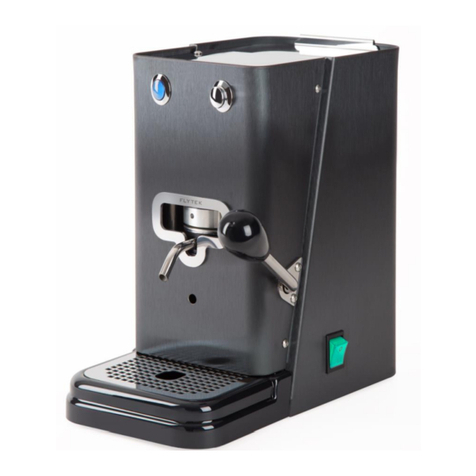
FlyTek
FlyTek Zip User manual
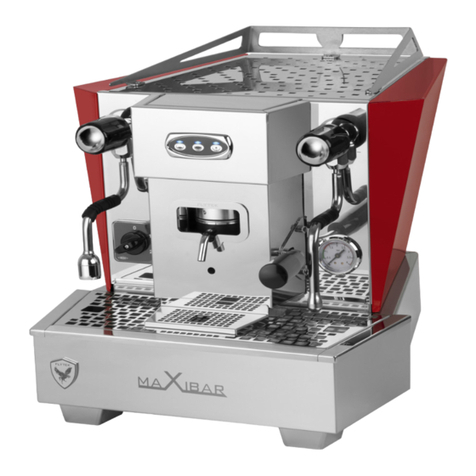
FlyTek
FlyTek MAXIBAR User manual
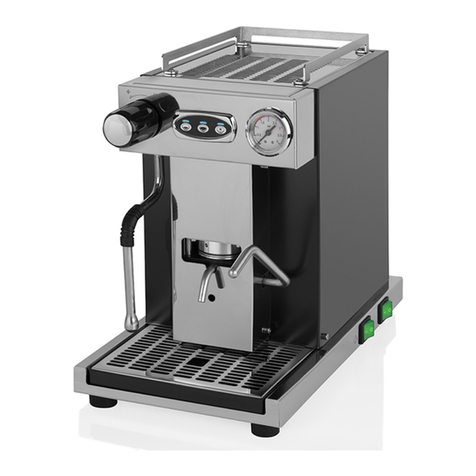
FlyTek
FlyTek CLICK PRO User manual
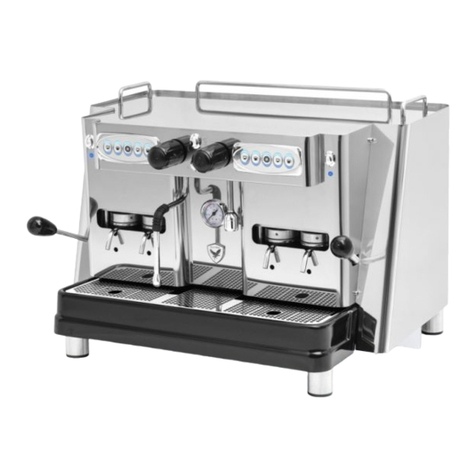
FlyTek
FlyTek ZIP PRO 4 User manual
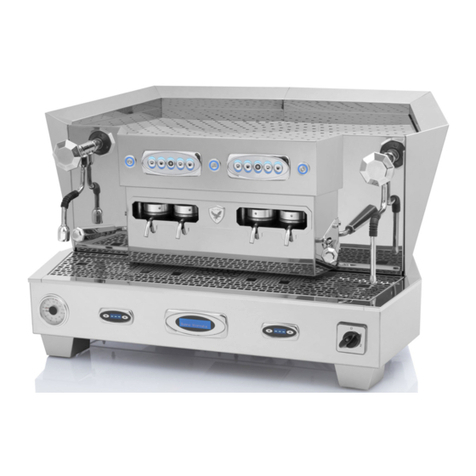
FlyTek
FlyTek MAXIMA User manual

FlyTek
FlyTek EXCELSA User manual

FlyTek
FlyTek ECO-ZIP User manual
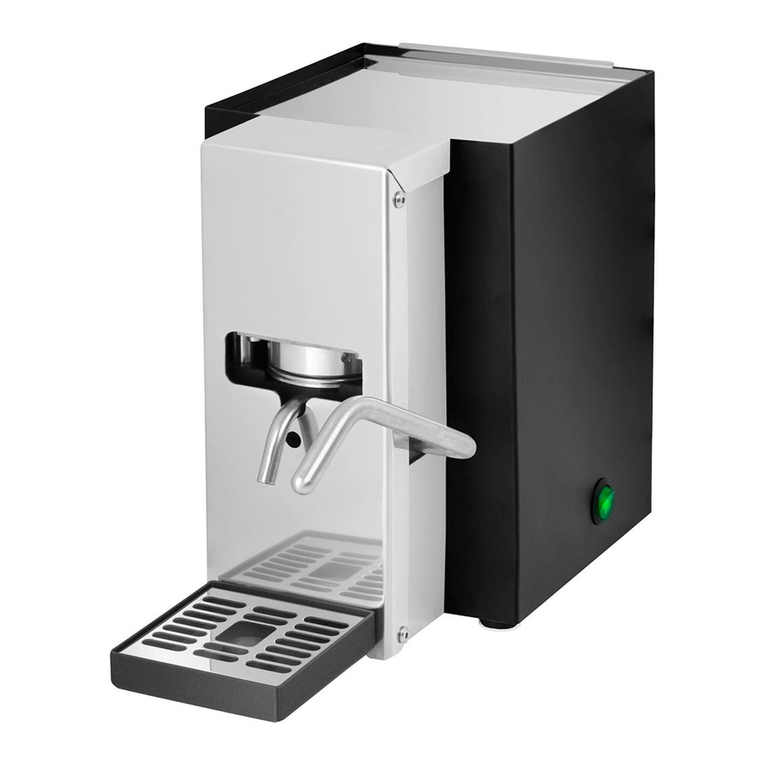
FlyTek
FlyTek CLICK User manual
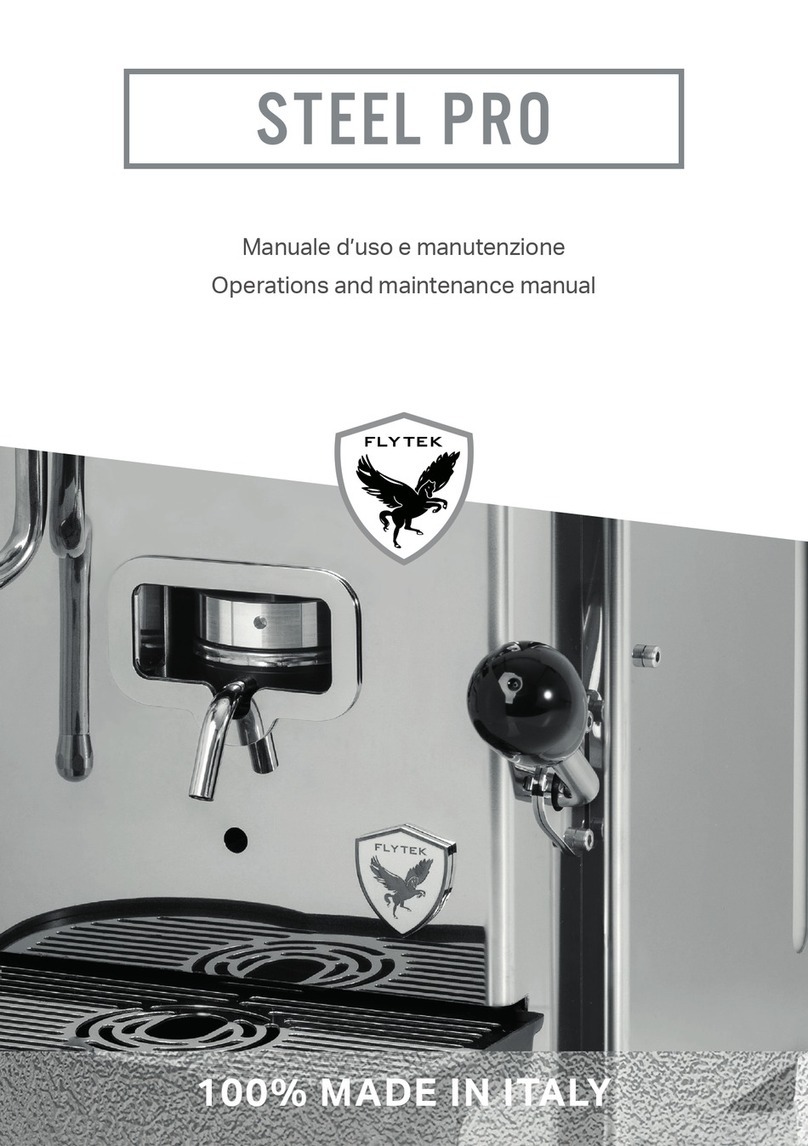
FlyTek
FlyTek STEEL PRO User manual
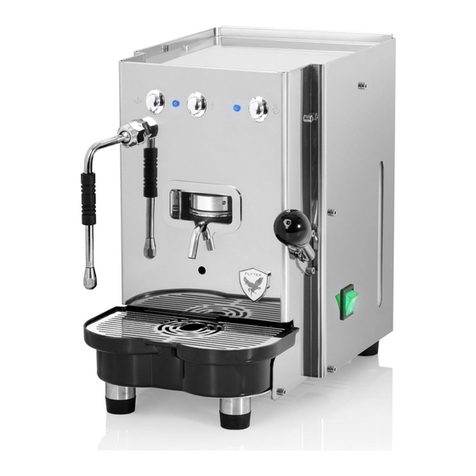
FlyTek
FlyTek Steel Vapor User manual
Popular Coffee Maker manuals by other brands
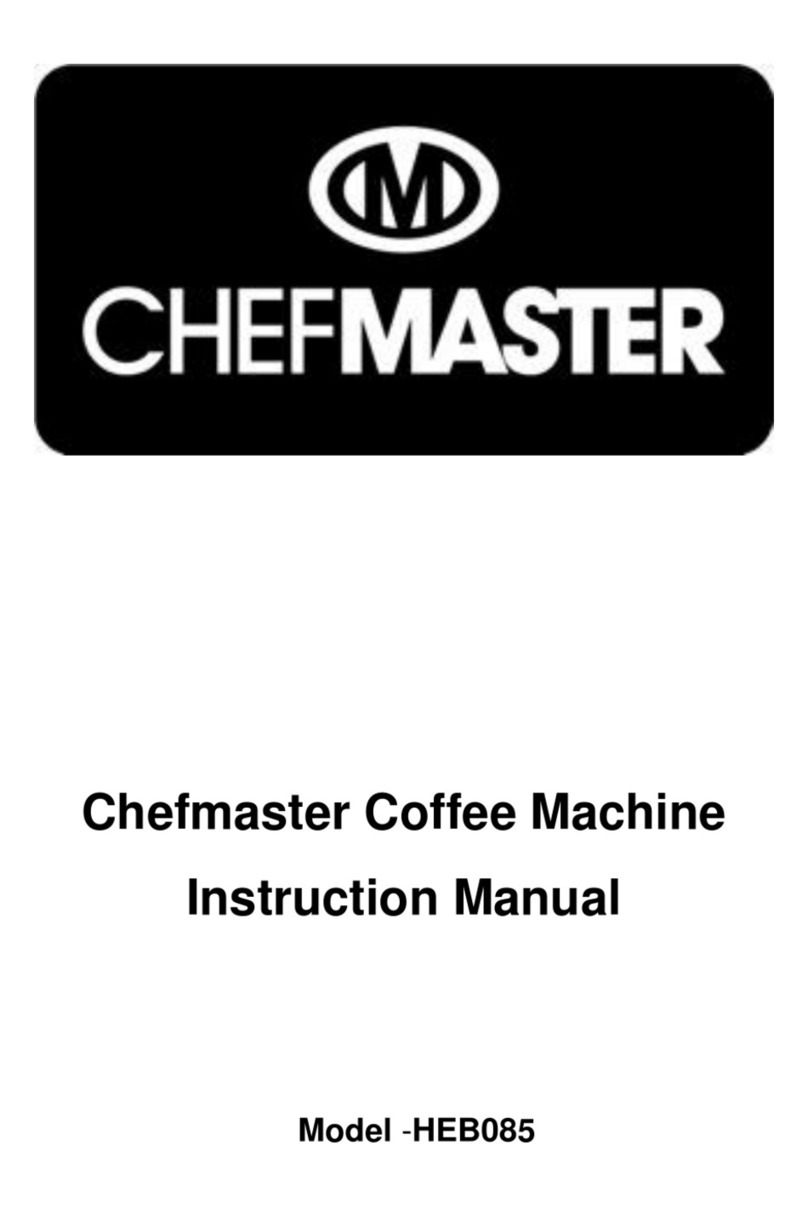
Chef-Master
Chef-Master HEB085 instruction manual
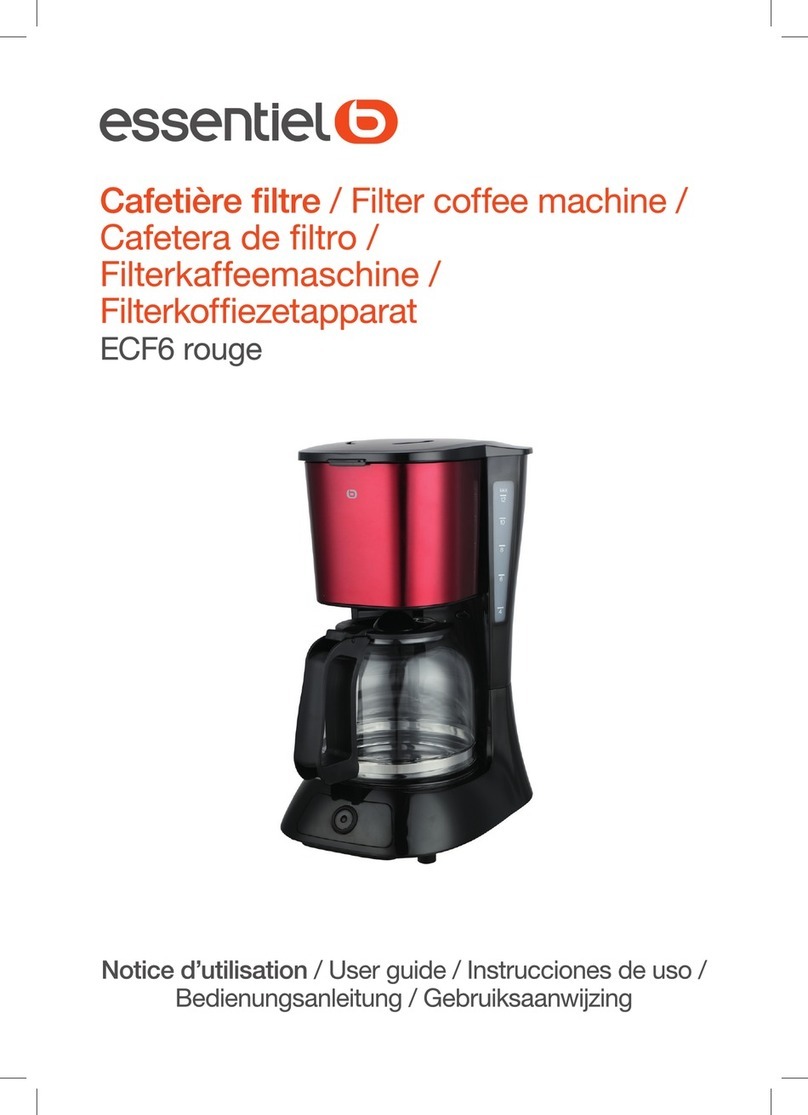
essentiel b
essentiel b ECF6 user guide
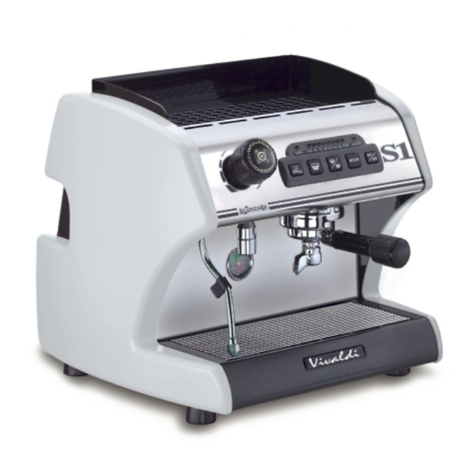
La Spaziale
La Spaziale S1 Vivaldi Instruction manual for the installer

Mr. Coffee
Mr. Coffee UTC 403 Series Installation and operating instructions

Mr. Coffee
Mr. Coffee BVMC-ECMP1000 quick start guide
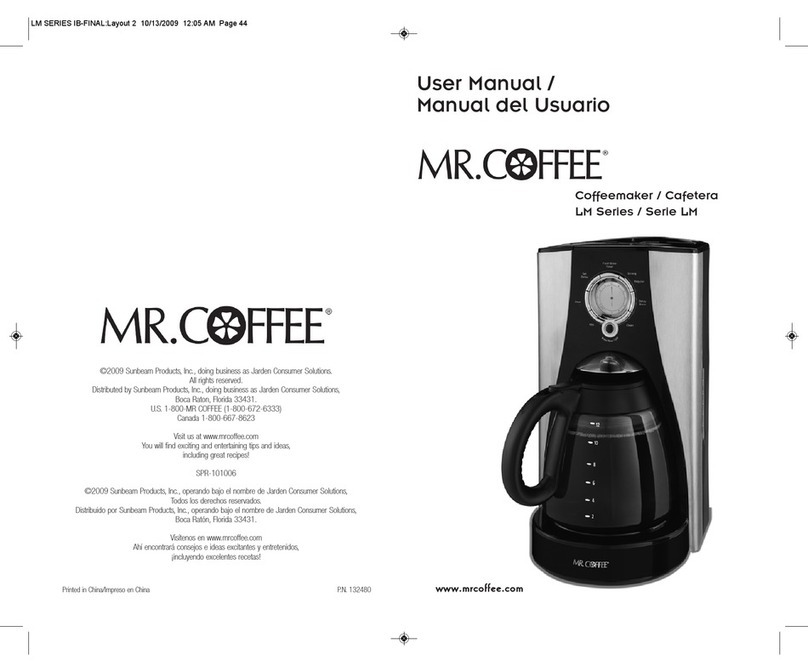
Mr. Coffee
Mr. Coffee BVMC-LMX43 user manual
